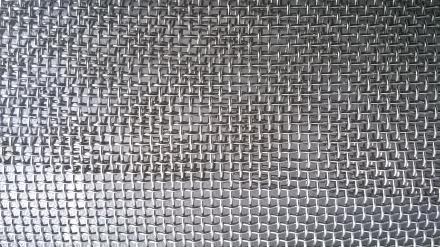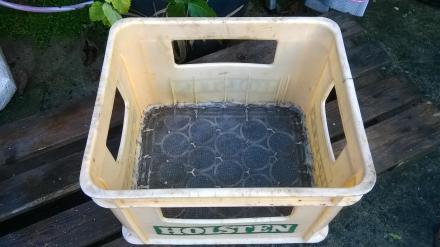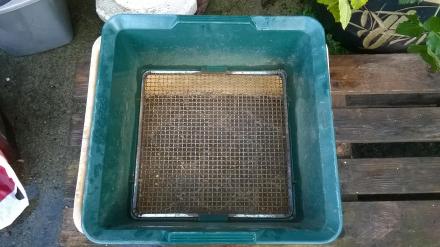Northfolk Sieving Project
Wet sieving for fossils
A great way to search for small fossils is to use a 1mm sieve (or 0.5mm for really small stuff). The advantages of this technique are that it can be done at leisure once the field samples are collected and it doesn't require especially good collecting conditions, just so long as the required deposit is visible. It will of course target small fossils such as teeth, seeds, fish remains etc from the Cromer Forest bed. Sieving can also be used on Chalk, once it has been broken down by some method such as Glauber's salts.
 |  |
 |
To wet sieve
For scientific work it is essential to record the details of the bed and locality and to give the sample a number so that it can be documented. Load the sieve with sediment (not too much in one go) and take it to a puddle, stream, rock pool etc with at least 15 cm of water in it. Running water is even better. Now swoosh it around and the fines will pass through the mesh. I find that a variety of actions is most efficient and easiest on the back and arms. Up and down; rotating, rocking. Doing all of these in turn will see your load diminish as rapidly as possible. You can discard large stones there and then and you can break resistant lumps down with your hand. Get it as good as you can in the field and you won't be troubled with too much to do when you get home.
Processing at home or in the lab
Once home you should wash the residue using a hose spray to clean it of dusty fines. Then dry the residue. I use a bakers' bread tray lined with a pile of several whole broadsheet newspapers. Spread out the residue evenly on the papers and leave it in a warm place for around 20 minutes. The excess water will be wicked into the newspaper and then you can withdraw the wet top sheets can be removed to reveal dry ones beneath. Spread the residue out again and leave another 20 minutes. Keep doing this until the residue is almost dry. Leaving it a little bit damp will help to suppress dust (especially important if you are doing this at home and are married). When dry, sieve the residue through a coarser sieve (e.g. a fine garden sieve of 3mm to 5mm mesh). Retain each fraction and you can search them separately. By doing this it makes searching more efficient, as small things can't hide behind big ones. Most importantly, label your residue samples with their sample numbers or the full data, so you don't forget where they came from.
Searching
You will need some magnification to do this properly and good illumination. Either use a strong magnifying glass, some magnifying spectacles or best of all a 5X or 10X binocular microscope. Tip a teaspoon- or a tablespoon-full of the residue into a shallow box lid, give it a shake to spread it around evenly and start searching. Have to one side either some delicate tweezers, or a fine paint brush with which to extract the finds. You will also need some small containers into which you can drop your finds. It might help to have separate pots or cells in order to separate bones from teeth and seeds from shells etc.
Storage
Finds can be stored in small glass or plastic tubes with stoppers. Then these can be stored in shallow drawers or in boxes. It is essential to place a label inside each container with either the full data or at least the sample number that relates to your documentation system. Identification of the finds can proceed at a later date and may need reference to the literature, the interweb, or by consulting a reference collection, an expert, or both. Any special finds can be taken out of the sample and stored individually (with their data of course) so as to better document and curate the good stuff.